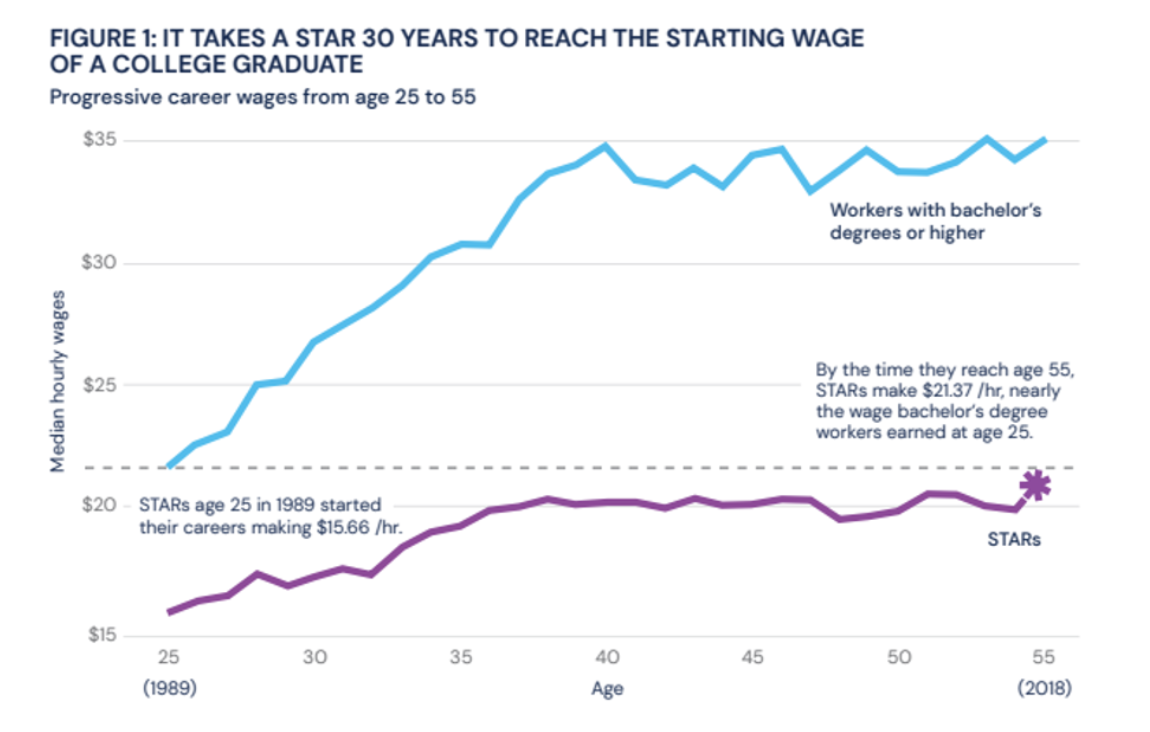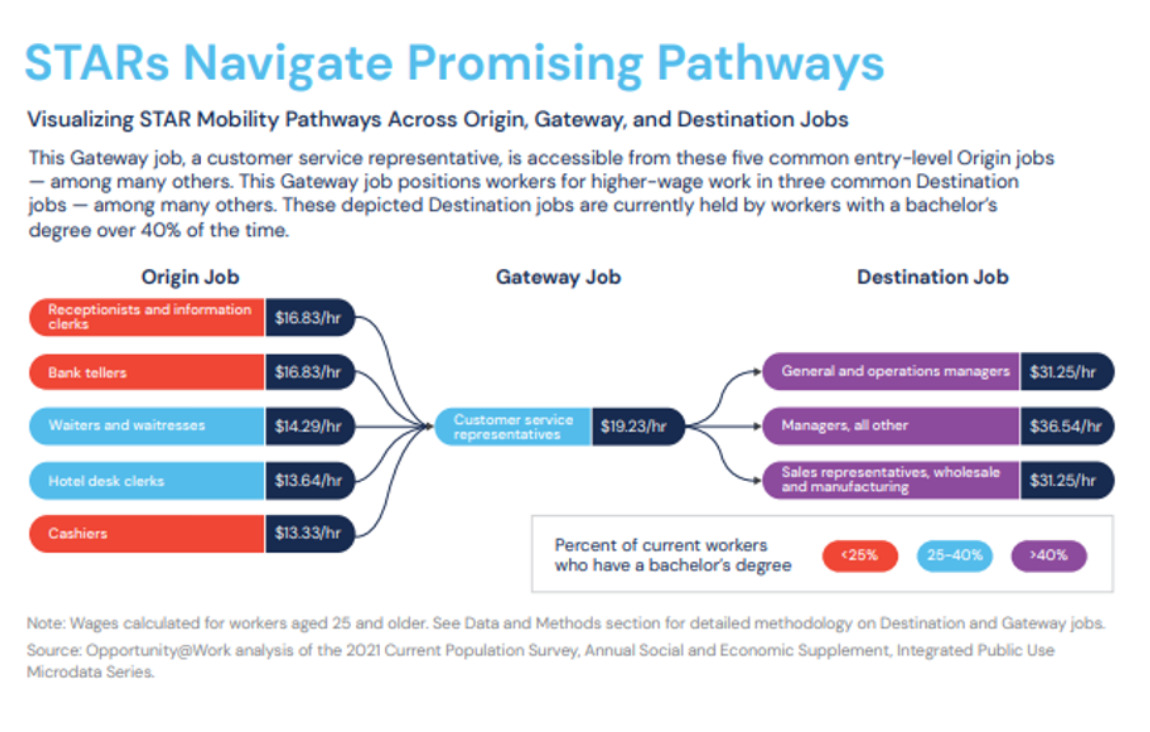In its simplest form, a ceiling is something that prevents you from going higher. When it comes to getting hired, many applicants hit a ceiling with certain jobs because of the lack of a bachelor’s degree or higher.
To see why this is happening, and the effect it is having on businesses and people, we don’t have to look any further than the hiring practices used by 90% of the top businesses today – namely automated applicant tracking systems (ATS). But like all automated systems, they are only as good as the programming that went into them.
The Harvard Business School found, with research collaboration with Grads for Life and Accenture, that applicant tracking systems reject about half of all resumes.
For example if a tracking system is programmed to look for a bachelor’s degree or higher, it will cut out all the applicants that do not meet that criteria. In many cases, the applicants that end up in the virtual trashcan are otherwise qualified and meet most or all of the rest of the criteria.
In fact, the same research out of the Harvard Business School found that 60% of those rejected met all other requirements – except not having a degree. With 69% of the jobs created between 2012 and 2019 requiring a college degree, that only leaves 31% of the new jobs available to 50% of the workforce not having one.
Hiring Practices are Starting to Change
The practice of requiring a degree for jobs that can be done without one is starting to change, but at a much slower pace than it should. What forced the change was The Great Resignation during the pandemic.
People were quitting by the thousands and employers could not hire back enough qualified individuals using their old criteria that required a degree for the open positions. While their hiring stalled because of their self-imposed paper ceiling, their bottom line fell through the floor.
Out of desperation, many dropped their college degree requirement for jobs that did not need a degree, and they started hiring through a program called STARs (Skilled Through Alternative Routes).
It is not a matter of STARs not being able to do the jobs; 20% are in jobs today that used to require a college degree proving that STARs have the skills to succeed if given the chance.
For example, many IT-based jobs can be learned through a 12 to 16-week boot-camp style training program or through certificate awarding programs that many times are better than having a four-year degree when it comes to actually doing the job.
The Effect on People
We have already seen how requiring a degree affects companies, but it also severely affects the people too because a disproportionate number of STARs candidates are Black, Hispanic, Veterans, rural or otherwise disadvantaged workers. To see this effect, let’s look at the chart below. As it shows, it takes a worker without a degree, 30 years to make the same hourly wage that a 25-year old fresh out of college makes at their first job.
Chart courtesy of Opportunity@work – Rise With the Starts – 2022 Report
STARs Mobility Pathways
Through STARs, there are methods for people to work their way from a low-paying job to one that can pay up to twice as much or more. To show the impact hiring based on skills and experience STARs can make, here is a typical pathway to success:
Chart courtesy of Opportunity@work – Rise With the Starts – 2022 Report
In the left column are five typical jobs a person without a degree may be doing with an average hourly salary of $14.98 per hour. Under STARS, upward progression could be to a Gateway job as a Customer Service Representative job paying $19.23 per hour. That person could further progress to one of the Destination jobs far right column that pays an average hourly salary of $33. Also, as noted only 40% of current workers in these Destination jobs have bachelor’s degree which means 60% do not … and are doing the jobs just fine.
Reach for the STARs
In the end, employers are missing out on a lot of great talent that have the skills and abilities to function in a higher-graded job that is currently coded as requiring a college degree … but is a degree really needed to do the job? Twenty percent of people currently in these jobs that required a college degree are proving they can do the work if just given the chance.
By hiring based on Skilled Through Alternative Routes (STARs), instead of degrees will not only will improve workers’ quality of life and standard of living, but increase company bottom lines – a win/win for all by any standard!






